- Ball Blue Book. If you have never canned or preserved anything, start here. It’s inexpensive, and can often be found with the canning supplies at the hardware store “in season”. I still refer to their drawing of where 1/4 inch, 1/2 inch and 1 inch “head space” is every time I can.
- National Center for Home Food Preservation. This website is the queen of all extension office type resources on canning. Great information, safe advice. Can’t afford to buy the Ball Blue Book? Go here.
- Food in Jars. This blog has become wildly popular in the last year or two. Great advice on canning, with recipes. Almost as good, the author reposts from lots of other food blogs, serving as a great place to go for lots of preserving information. If you “like” it on Facebook, you’ll see the posts daily.
Cooking
- Alton Brown. OK, I admit it. I’m practically a groupie. His TV show “Good Eats” on Food Network has taught me a lot about the science behind cooking. A go-to source for “master” recipes.
- Cooks Illustrated Magazine. I’ve been subscribing to this magazine, and more recently, their website instead, since about 2000. No advertizing, great recipes, and they dig in and test techniques to save you time and aggravation. They also do great equipment reviews and taste tests. Many of my “master” recipes come from here. The only big drawback, aside from the cost, is they don’t publish nutritional information and their recipes are sometimes pretty high calorie, so you need to proceed with some nutritional knowledge going in. (I don’t recommend the “serves 4” garlic mashed potato recipe that calls for 2 lbs of potatoes, 22 cloves of garlic, 1 stick of butter and 1 cup half and half!)
- Eating Well Magazine/Website. Wondering what’s for dinner, but want healthy options and nutritional information? This website’s recipe search is where you need to be. I also receive the magazine, which has done some really well researched and written pieces on the local foods movement in the last few years.
- Any book by Michael Ruhlman. Wonderful books on Charcuterie (preserving meat), along with cook books that make you stop thinking about the recipe and make you start thinking about the principles of cooking going on behind the recipe. Once you master some of these, it frees you up to create your own unique meals. Plus I love his blog. Especially when he goes on a rant about some stupid food trend.
- How-to books by Ashley English. If I were going to write how-to books, these are the books I would write and how I would write them. Chock full of great information, presented in an easy to understand manner, with excellent graphics and photographs. Home Dairy, Keeping Bees, Canning and Preserving and Keeping Chickens are all highly recommended for the budding homesteader. And she keeps coming out with new books every few years.
- Mother Earth News (MEN). This magazine has been around since the early 70’s and is a great resource for all things back to the land. You can purchase back issues, in 10 year increments, on CD for around $10 each (It’s worth purchasing these just to see how the language and style changes. From a search on the key word “bread” I found a great piece on “How to make more bread” from the early 70’s that was about how to make more money, and stick it to “the man” at the same time). There are other magazines out there, such as Countryside, that cover similar topics, but MEN is better edited. I’ve subscribed to MEN for years. Note that the website pretty much contains everything they have ever published, but can be a bit annoying in its design. Note. Old issues of Organic Gardening from the 1970’s and 80’s are worth picking up if you can find them. The more recent magazine is kind of the “Mc Magazine” of the organic growing world. Too short, not enough detail for my information loving brain.
- How to Grow More Vegetables: Than You Ever Thought Possible on Less Land Than You Can Imagine by John Jeavons. Have a small space but want to feed your family almost all of their produce from your garden? This is the book for you. Great intro to intensive gardening with lots of good planning tools.
- Teaming with Microbes. The organic Gardener’s Guide to the Soil Food Web by Jeff Lowenfels and Wayne Lewis. Organic gardening is really all about the health of the soil. This book explains why in a very accessible way.
- As a follow up to Teaming With Microbes, The Hidden Half of Nature:The Microbial Roots of Life and Health by David R. Montgomery and Anne Bikle. This book BLEW ME AWAY. I’ve been fascinated by the gut microbiome research for years, and thought I had been keeping up with it, but turns out, I knew very little. The connection between soil health, gut health, and overall human health is profound. Highly highly recommend this book, written by a husband and wife team from different perspectives.
- Gaia’s Garden. A Guide to Home-Scale Permaculture, by Toby Hemenway. Permaculture develops “sustainable architecture, regenerative and self-maintained habitat and agricultural systems modeled from natural ecosystems.” Basically it looks to what happens in nature and mimics it in our own farm systems (it can actually be applied to anything from cultural systems to architecture). This is the foundational principle of how we farm. Everything needs to fit in and help feed something else.
- GRIST Magazine. I plan on subscribing to this publication this year. Too many times I’ve run across very well written articles on controversial topics on sustainability (can organic farming feeding the world, climate change, GMO’s) only to discover it was published in GRIST. Need more of the bigger picture “change the world” angle on sustainable farming? This is your publication.
Livestock/Pasture/Sustainable Farming/Farm Business Resources
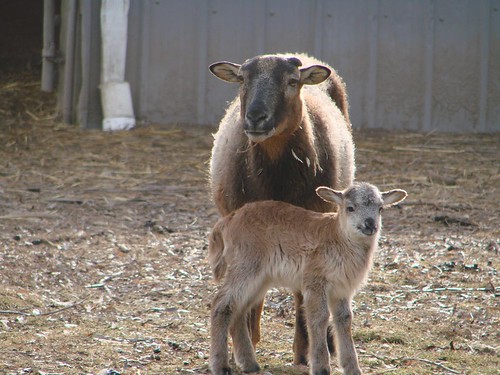
- Omnivore’s Dilemma by Michael Pollan. I truly believe that everyone who has the slightest interest in organic or sustainable food should read this book. It’s divided up into three sections/meals. A conventionally grown meal, a sustainable meal and an entirely foraged meal. It then delved into how each of these meals was produced. If you read nothing else, read the first section, which is hands down the best explanation of the Farm Bill and how we got into the mess we are in with farm subsidies I’ve ever read.
- Books by Joel Salatin of Polyface Farms. Joel was doing sustainable agriculture before sustainable was a “thing”. If you read a couple of his books, you’ll start to notice redundancies, because his messages are consistent and unrelenting. The early books were all self published. You can often find a few at your local library. Great advice for how to get started. He doesn’t sugar coat it, but he does make it all seem possible and worthwhile. If you ever have a chance to see him talk in person, go. My favorite Salatin quote. “The customer is always right, but not every customer is right for you.”.
- On Pasture. Want great informational articles on maintaining a pasture in the most sustainable way? Great studies of animals, diet and nutrition? This is the place. They are doing wonderful work. And its free!
- ATTRA. The National Sustainable Agriculture Information Service. It’s like the extension office for sustainable agriculture! An indispensable resource.
- SARE. Sustainable Agriculture Research and Education. Great information. Great small grants available. Drill down into their project reports when looking for information on how to do anything that is sustainable and unusual (rabbit tractors anyone?). Or, apply for a grant and do your own research.
- Eliot Coleman of Four Season Farm. Coleman started out in organic farming way back in the 1970’s. He’s one of the founders of the movement. We’ve come a long way baby. His books on how to market farm organically, and season extension, are the go-to resources for just about everyone. If you want to grow vegetables organically on a larger scale, this is your first resource. Most libraries will have at least one of his books.
 Growing For Market. A subscription newsletter. Kind of expensive, but great information if you are trying to grow produce/flowers as a business and not just to feed your family. Their book list is also very very good.
Growing For Market. A subscription newsletter. Kind of expensive, but great information if you are trying to grow produce/flowers as a business and not just to feed your family. Their book list is also very very good.- Women In Agriculture conference. This link is for the ones in Washington State, but this is a national organization, and the keynote speakers speak nationally, via weblink. I can’t recommend this conference enough, just for the opportunity to connect with other woman in your area who are farming. It’s also inexpensive. Usually happens in February. I go every year.
- Thriving Farmer Podcast. The focus here is on the business side of farming, not the how-to. First season is out for 2019, and every episode was good, even when the crop or farm set-up was very different from my own. Interviews are with some of the top people in the business. Serious heavy hitters. Endless additional resources listed for each episode. HIGHLY recommended.
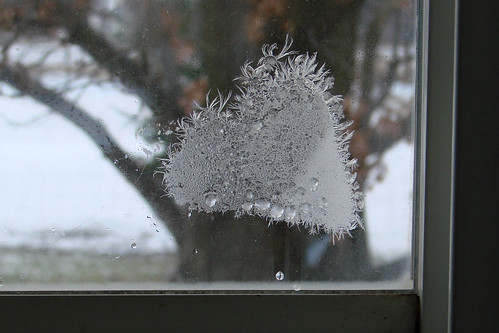 Inspiring Books on the Farming/Homesteading Lifestyle
Inspiring Books on the Farming/Homesteading Lifestyle
- Gaining Ground by Forrest Pritchard. An inspiring and enlightening story about how he dug his family farm out of debt with sustainable farming and marketing practices. A great read.
- Farm City, the Education of an Urban Farmer by Novella Carpenter. Novella only got away with a lot of what she did because she was essentially living in a section of Oakland that had pretty much been abandoned by city services, so no one was paying attention, but its a great read. She has several other books on urban farming as well.
- The Dirty Life by Kristin Kimball. A great read about how a city girl fell in love with a farmer and how it changed, well, everything.
- Turn Here Sweet Corn: Organic Farming Works by Anita Diffley. A great history of the early organic farming movement and how to keep fighting for what you love and believe in.
- Animal, Vegetable, Miracle by Barbara Kingsolver. Confession. Kingsolver was one of my favorite authors WAY before I read this book. I absolutely love her. But this book, which is the true story of how her family ate locally for an entire year, is funny and inspiring. I raise Bourbon Red turkeys because of this book! And the recipes are great. It’s been around for a while, but in case you missed it, a highly recommended read.
- Chickens in the Road by Suzanne McMinn. I ran across Suzanne’s blog when someone linked to her tutorial on making liquid soap, and I was instantly hooked. The blog is fun, and active. The book is about how it all came to be, and an inspiring story of a woman facing up to the things in her life that were not working, and changing that, without throwing away the things that were.
- This Life is In Your Hands by Melissa Colemam. Yes, the daughter of Eliot Coleman, who is mentioned above for his market farming books. This is a peek behind the curtain of the early hippie farming days of the 1970’s, and proves that getting back to the land doesn’t necessarily get rid of your own baggage. Definitely more memoir than how-to, but I found it fascinating.
Miles Away Farm Blog © 2021

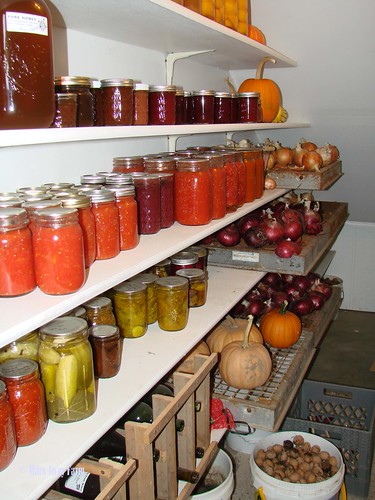
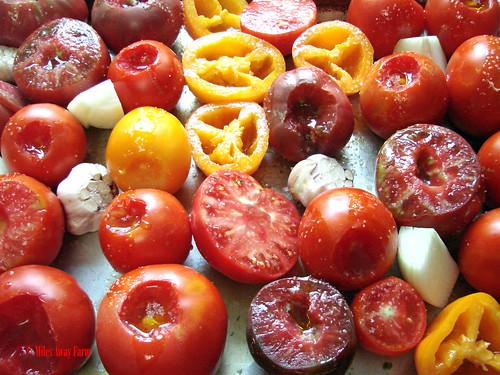
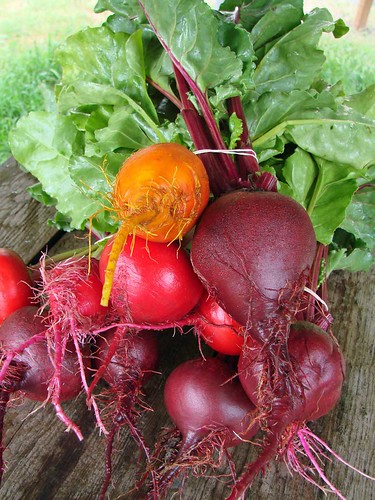

2 comments
Comments feed for this article
June 8, 2023 at 9:29 am
Jensen McLenithan
Check out SKS Bottle & Packaging, Inc. for a variety of packaging and containers perfect for canning, pickling, gardening, homesteading and more!
June 8, 2023 at 2:36 pm
MilesAwayFarm
Jensen, I’ve been using SKS for many years. Love them. Though Covid really through their supply chains into chaos.